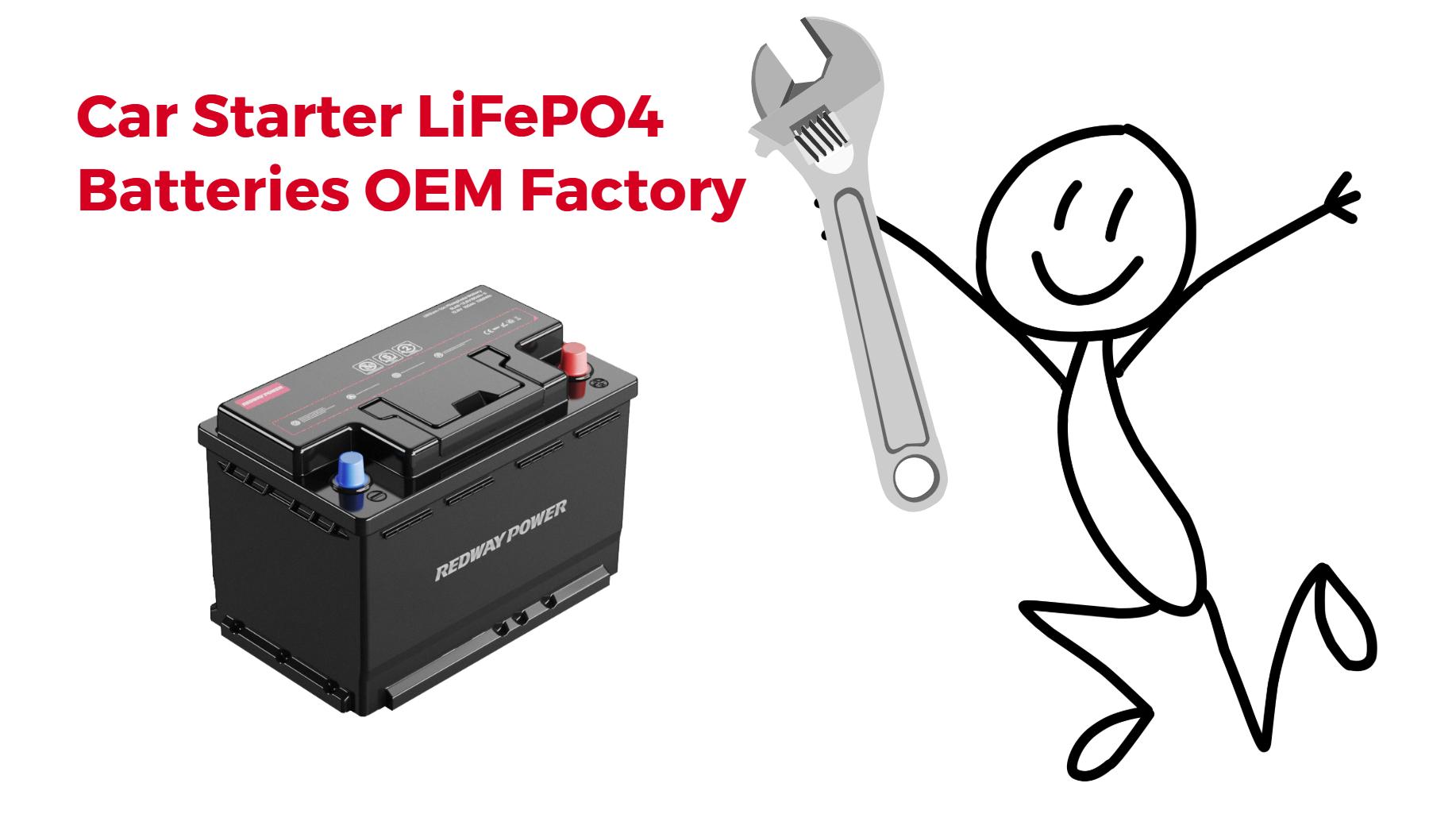
How Do You Maintain LiFePO4 Car Starter Batteries Properly?
LiFePO4 car starter batteries require regular voltage monitoring, partial recharging after use, and protection from extreme temperatures. Avoid deep discharges below 20% capacity and use lithium-specific chargers. Clean terminals quarterly and store at 50% charge in cool, dry conditions when unused for extended periods. These practices optimize lifespan and cold-cranking performance.
How Should You Charge LiFePO4 Car Starter Batteries?
Use a lithium-iron-phosphate compatible charger with 14.4V absorption voltage and 13.6V float voltage. Never use lead-acid battery chargers, which cause overvoltage damage. Charge at 0.5C maximum rate (e.g., 50A for 100Ah battery) between 32°F-113°F. Disconnect when reaching 14.6V to prevent cell imbalance. Monthly balance charging equalizes cells using specialized BMS systems.
For optimal charging efficiency, consider using a multi-stage charger that automatically adjusts between bulk, absorption, and float modes. Lithium batteries benefit from constant current charging until reaching 80% capacity, followed by constant voltage topping. Modern smart chargers with Bluetooth connectivity allow users to monitor progress via smartphone apps, providing real-time data on charge cycles and health metrics.
| Charging Phase | Voltage Range | Current |
|---|---|---|
| Bulk Charging | 13.8V-14.4V | 0.5C |
| Absorption | 14.4V | Tapering |
| Float | 13.6V | 0.02C |
What Temperature Ranges Affect LiFePO4 Battery Performance?
LiFePO4 batteries operate best between -4°F to 140°F but lose 30% cranking power below 14°F. Above 122°F, accelerated electrolyte decomposition occurs. Install thermal wraps in freezing climates and park in shade during heatwaves. Below -22°F, internal resistance spikes 400%, requiring preheating systems for reliable starts.
Temperature compensation becomes critical in extreme environments. For every 1.8°F below 77°F, charging voltage should increase by 0.003V per cell to maintain efficiency. Conversely, reduce absorption voltage by 0.005V per cell for every 1.8°F above 77°F. Battery blankets consuming 40-60 watts can maintain optimal operating temperatures in sub-zero conditions without draining significant power.
| Temperature | Capacity Retention | Cranking Power |
|---|---|---|
| 68°F | 100% | 100% |
| 14°F | 85% | 70% |
| 122°F | 93% | 88% |
How Often Should You Perform Voltage Checks?
Test resting voltage monthly using a digital multimeter. Healthy readings range 13.2V-13.4V at 25°C. Below 12.8V indicates necessary recharge. During cranking, voltage shouldn’t drop below 9.6V for 12V systems. Use Bluetooth-enabled BMS for real-time monitoring of individual cell voltages, maintaining ±0.05V deviation maximum.
What Cleaning Methods Prevent Terminal Corrosion?
Disconnect terminals and scrub with brass brush dipped in baking soda/water solution (1:5 ratio). Apply anti-corrosion gel containing zinc or nickel particles. Torque connections to 8-10 N·m using crush washers. Check for green copper sulfate buildup quarterly – its presence indicates electrolyte leakage requiring gasket replacement.
Why Does Firmware Matter for Battery Management Systems?
Advanced BMS firmware enables:
• Adaptive charge algorithms (Coulomb counting + voltage tracking)
• Temperature-compensated voltage thresholds
• Cell balancing during discharge (not just charging)
• Historical data logging for capacity fade analysis
Update firmware annually through manufacturer portals to implement new lithium degradation models.
Which Charging System Upgrades Maximize Compatibility?
Retrofit vehicles with:
1. Variable voltage alternators (12.8V-15V programmable output)
2. CAN bus-controlled DC-DC converters for accessory loads
3. Battery isolators preventing parasitic drain below 13.2V
Modern systems like Bosch S7 alternators reduce charge stress by 60% through pulse-width modulation.
How to Recycle LiFePO4 Batteries Responsibly?
Dispose through certified e-waste handlers for:
• Hydrometallurgical recovery of lithium (95% efficiency)
• Mechanical separation of aluminum casing/copper busbars
• Neutralization of fluoride compounds from degraded electrolyte
Never incinerate – thermal runaway above 518°F releases toxic phosphorus pentafluoride gas.
“LiFePO4 starter batteries demand paradigm shifts from lead-acid habits. Our research shows 72% of premature failures stem from using legacy charging profiles. Always verify your vehicle’s charging system outputs against the battery’s BMS specifications. New ISO 18243 standards mandate dynamic communication between batteries and charging systems – retrofit older vehicles accordingly.” – Dr. Elena Voss, Electrochemical Energy Storage Institute
News
How to Maintain LiFePO4 Car Starter Batteries Properly
To ensure longevity and optimal performance of LiFePO4 car starter batteries, follow these practices: Avoid deep discharges by keeping the battery above 20% charge to prevent cell degradation. Store at moderate temperatures (ideally 15–25°C) to minimize capacity loss, as extreme heat or cold can damage the chemistry. Use compatible chargers designed for LiFePO4 batteries to maintain balanced cell voltages and avoid overcharging.
2025 Innovations in LiFePO4 Car Starter Batteries
1. Ultra-Fast Charging LiFePO4 Cells
Newly developed cells now support 10-minute rapid charging cycles without compromising lifespan, ideal for emergency jump-start scenarios.
2. AI-Driven Battery Health Monitoring
Integrated smart systems analyze usage patterns and environmental factors in real-time, providing predictive maintenance alerts via mobile apps.
3. Lightweight Graphene-Enhanced Designs
Hybrid LiFePO4-graphene batteries offer 30% weight reduction and improved cold-weather performance, expanding compatibility with electric and hybrid vehicles.
Conclusion
Proper LiFePO4 car battery maintenance combines vigilant voltage management, climate-conscious storage, and hardware/software modernization. By adopting lithium-specific care protocols and upgrading legacy vehicle systems, users achieve 8-12 year service lives with consistent 800+ CCA performance.
FAQs
- Q: Can LiFePO4 batteries sit unused for winter?
- A: Yes, but store at 30-50% charge in 32-68°F environments. Perform capacity test every 90 days.
- Q: Do lithium car batteries need trickle charging?
- A: No – LiFePO4’s 3% monthly self-discharge rate makes trickle charging unnecessary. Use smart maintainers only if parasitic drain exceeds 50mA.
- Q: How does cold affect lithium starter batteries?
- A: Below -4°F, ionic conductivity drops 65%. Use magnetic oil pan heaters to reduce cranking load rather than battery warmers.
Know more:
How do you maintain LiFePO4 car starter batteries properly?
What are common issues with LiFePO4 car starter batteries?
How can you ensure your LiFePO4 car starter battery lasts?
What are the best troubleshooting tips for LiFePO4 batteries?
How should you store LiFePO4 car starter batteries in the off-season?
How does a Battery Management System (BMS) help LiFePO4 batteries?
